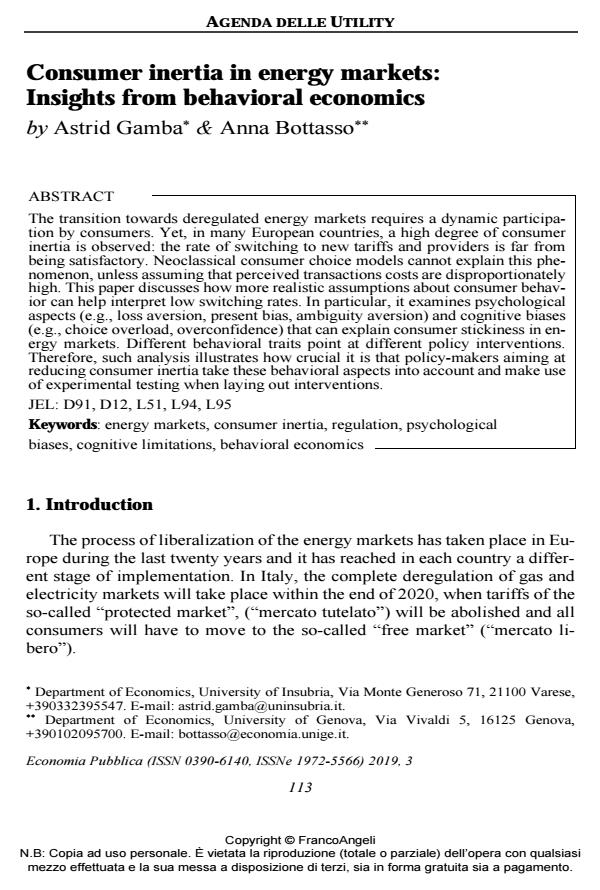Consumer inertia in energy markets: Insights from behavioral economics
Journal title ECONOMIA PUBBLICA
Author/s Astrid Gamba, Anna Bottasso
Publishing Year 2020 Issue 2019/3
Language English Pages 18 P. 113-130 File size 100 KB
DOI 10.3280/EP2019-003005
DOI is like a bar code for intellectual property: to have more infomation
click here
Below, you can see the article first page
If you want to buy this article in PDF format, you can do it, following the instructions to buy download credits

FrancoAngeli is member of Publishers International Linking Association, Inc (PILA), a not-for-profit association which run the CrossRef service enabling links to and from online scholarly content.
The transition towards deregulated energy markets requires a dynamic participation by consumers. Yet, in many European countries, a high degree of consumer inertia is observed: the rate of switching to new tariffs and providers is far from being satisfactory. Neoclassical consumer choice models cannot explain this phenomenon, unless assuming that perceived transactions costs are disproportionately high. This paper discusses how more realistic assumptions about consumer behavior can help interpret low switching rates. In particular, it examines psychological aspects (e.g., loss aversion, present bias, ambiguity aversion) and cognitive biases (e.g., choice overload, overconfidence) that can explain consumer stickiness in energy markets. Different behavioral traits point at different policy interventions. Therefore, such analysis illustrates how crucial it is that policy-makers aiming at reducing consumer inertia take these behavioral aspects into account and make use of experimental testing when laying out interventions.
Keywords: Energy markets, consumer inertia, regulation, psychological biases, cognitive limitations, behavioral economics
Jel codes: D91, D12, L51, L94, L95
- Pricing in the shadows of inattention: An information-theoretic model of prosumer inattention in residential solar tariff Sreelatha Aihloor Subramanyam, Xuewei Zhang, in The Electricity Journal 107503/2025 pp.107503
DOI: 10.1016/j.tej.2025.107503
Astrid Gamba, Anna Bottasso, Consumer inertia in energy markets: Insights from behavioral economics in "ECONOMIA PUBBLICA " 3/2019, pp 113-130, DOI: 10.3280/EP2019-003005